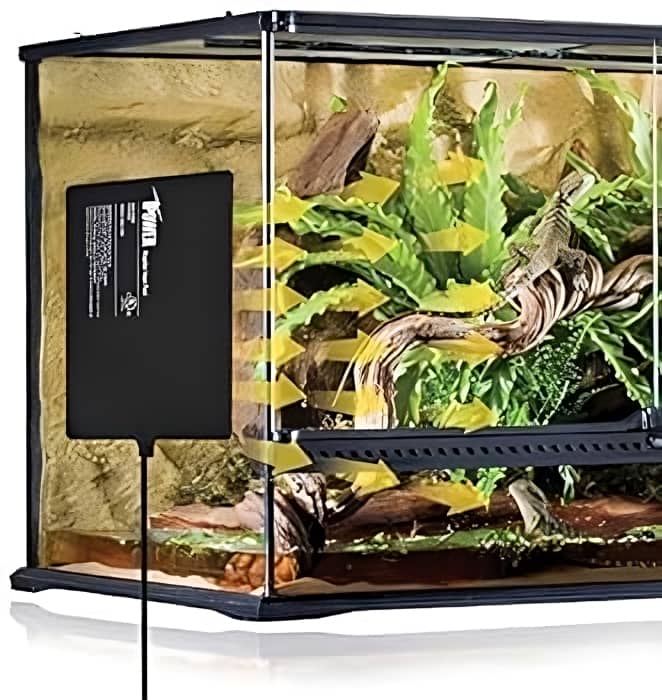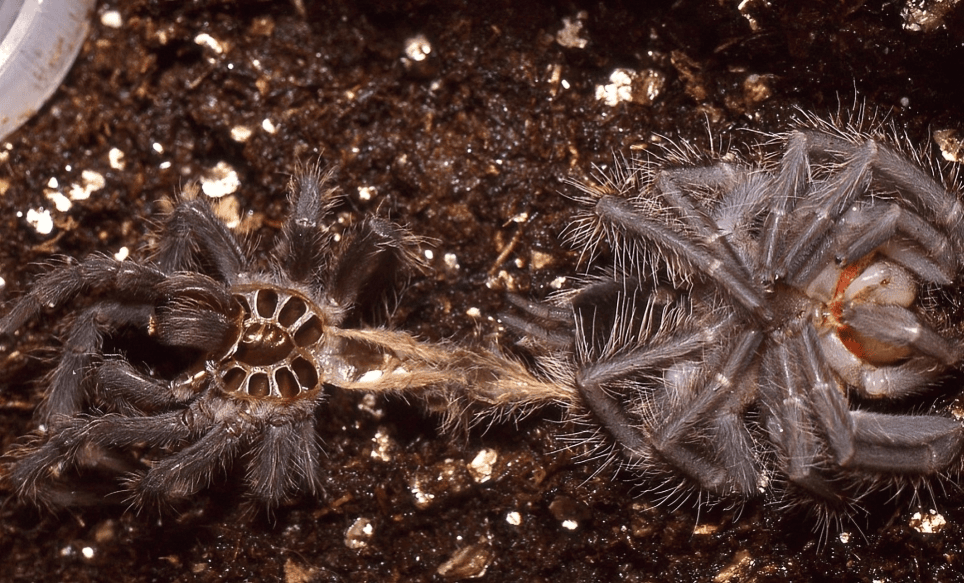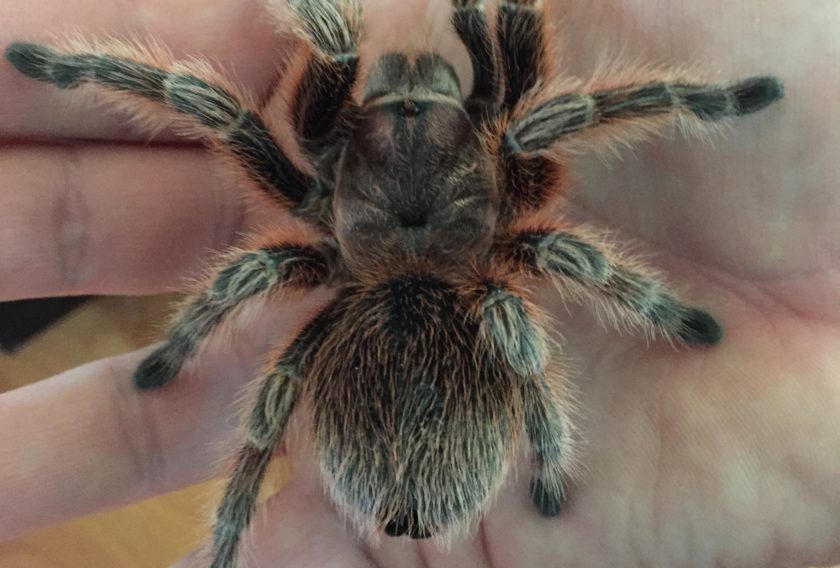The Brazilian Salmon Bird-Eating Tarantula, scientifically known as Lasiodora Parahybana, with its majestic appearance and intriguing behaviors, captivates the attention at first glance. Brazillian Salmon Bird Eating Tarantula is known for its striking appearance and fascinating behaviors.
Lasidora Pictures

This species promises to enthrall even the most seasoned arachnid.
It is the 4th largest tarantula in the world. Originating from the dense rainforests of northeastern Brazil, the Brazilian Salmon Pink Bird-Eater Tarantula boasts a commanding presence with its robust build and vibrant salmon-pink hue. This fascinating tarantula is from the Atlantic Forest Region, Columbia, Campina Grande, Atlantic Forest regions, Venezuela, Parts of Peru, and sub-tropical regions of South America. In the wild, it is found in leaf litter, logs, trees, shrubs, and burrows.
For several reasons, Brazilian salmon pink tarantulas are highly sought-after in captivity. They are attractive because of their size and color. It has a uniform black color body and once they attain maturity, orange and pinkish hair develop on the legs.
This aesthetically pleasing Salmon Pink Tarantula is a low-maintenance and long-lasting tarantula. Their willingness to sit out in the open also makes them popular.

Additionally, they are less expensive than T. blondi since L. parahybana reproduces so abundantly that spiderlings are significantly less expensive.
MALE VS FEMALE
The Brazillian Pink Bird Eaters exhibit a high degree of sexual dimorphism, with females being noticeably bigger and heavier than males. Males are usually smaller, with leg spans of around 8 inches (20 cm), but females can grow to astonishing sizes, with leg spans of up to 11 inches (28 cm) and weights several ounces.
Furthermore, mature males have characteristic tibial hooks on their front legs, which they use in mating rituals; females do not have these traits.

Behavior
The temperament of this tarantula is semi-aggressive. The Salmon Pink are generally docile but defend themselves by throwing barbed hairs from their abdomen under stress. In response to threats, these tarantula stridulate by rubbing setae on their pedipalps and legs. If the attacker continues to attack, the Salmon pink bird eater can give a painful bite along with kicking off urticating hairs.
The bird-eating tarantula is observed rubbing its abdomen with their hind legs and releasing hair. Apart from that it also raises its fangs exhibiting a sign of aggression. It is a fast and defensive tarantula.

It is one of the social creatures and is sometimes seen to peacefully reside with other tarantulas in the wild. However, you should keep your tarantula in a separate terrarium only.
These tarantulas are messy eaters with a hearty appetite.
Exercise
The spacious enclosure of the Salmon pink Bird-eating Tarantula provides enough chances for the tarantula to pursue its physical fitness.
Grooming
Throughout their life cycle, tarantulas lose their exoskeleton numerous times to reach adulthood. We call this process Molting. This process of molting is mandatory for the growth of the tarantula. The number of times your tarantula molts depends on its species, age and gender.
They molt almost monthly to every 3 months as slings and juveniles during warm seasons. If you want a faster-growing friend, ensure that their location is cozy. If you’re cozy without needing long sleeves or the heat on, they’re happy. LPs seem to like it a bit warmer than the average Tarantulas, with temperatures in the mid to high 70s.
Apart from temperature, feeding frequency also plays a vital role in increasing the rate of molting of your parahybana. With the fast metabolism, active climbing natures, and rapid growth rate, they’ll need the food to bolster growth. Moreover,as the body of a tarantula is mostly water, so it’s no kidding they need to be juicy to grow and expand. Keep an eye on your buddy’s water. You can also use a spritzer to moisten the substrate in a corner of their enclosure when it looks dry.
Care Sheet Of The Brazillian Bird Eating Tarantula
The owner of a Brazillian Salmon pink bird-eating Tarantula needs to provide less care for it. To extend the life of your pet tarantula, you can replicate their natural habitat, provide them with a healthy diet, maintain the required range of temperature and humidity, and take care of any health issues.
This is a thorough instruction on how to properly care for your pet.
Brazilian Bird Eating Tarantula Enclosure
In its natural habitat, Lasiodora parahybana constructs burrows in moist soil or hides within leaf litter, showcasing its adaptability to various environments. Due to its adaptability, the Brazilian pink Bird bird-eating tarantula requires less care from the pet owner in captivity. However, certain points should be taken into consideration while setting up the terrarium of your Brazillian Salmon Pink.

Size Of The Habitat
The plastic/acrylic enclosures allow easier modifications as per the requirement. The size of the enclosure should be around 3 times the size of the tarantula. As these tarantulas are massive and need enough room for movement, a 20-gallon low-lying enclosure will be apt. These stunning tarantulas are robust and may exert pressure to open the lid, so it should be properly fastened.
Substrate Requirements
Since these tarantulas are opportunistic burrowers—particularly when they are young and spiderlings—you must provide them with lots of substrate to dig in as well as a place to hide.
A substrate made with organic soil, coco fiber, and peat moss can keep your bird eater happy. A half-buried piece of cork, bark, or wood can start the entrance of a burrow and also help reduce your spider’s stress.

Required Temperature And Humidity Range
The temperature of the habitat should be maintained at about 72- 80 degrees F.
In colder regions or during nighttime, a heat mat can be used on one side of the enclosure to provide adequate warmth to the arachnid. The humidity level inside the cage should be around 60-80% and can be monitored using a hygrometer.

Specific Requirements For Spiderlings
This tarantula is also very fast as slings and prone to quickly bolting and erratically running around the enclosure when disturbed, so be sure to give them an enclosure that provides enough room to move around so they don’t dash out of their enclosure anytime you open the lid.

Brazilian Salmon Bird Eater Spider’s Diet
The Gaint Birdcatcher tarantula possesses a voracious appetite, preying on a variety of insects, small rodents, terrestrial vertebrates, large arthropods, amphibians, and even small snakes and birds in the wild. Though these tarantulas are carnivores, they have also been known to supplement their diet with plant matter such as fruits, leaves, and sugar. This is thought to provide essential minerals and moisture for survival. They have also been known to occasionally venture down to the forest floor to find food and water.

They are ambush predators; they sit in wait, strike approaching prey, and quickly inject venom to immobilize it.
In captivity, a diet primarily consisting of appropriately sized insects like crickets, roaches, and mealworms is sufficient to keep these giants healthy and satisfied.
Feeding
In captivity, a varied diet consisting of crickets, mealworms, cockroaches, and occasional treats such as waxworms, frogs, or frozen pinky mice will help ensure nutritional balance. It’s essential to provide live prey to stimulate the tarantula’s hunting instincts and promote natural behaviors.
Crickets
Tarantulas love crickets as food, and you can easily find them at your neighborhood pet store. Vita-Bugs crickets are boosted with beta-carotene, vitamin E, vitamin A, and omega-6 and omega-3 fatty acids, adding to their excellent nutritional content.
Dubia Roaches
Another excellent choice is Dubia roaches, which have up to 28% protein and can provide a nutritious meal for larger tarantulas.

Mealworms
Although mealworms and waxworms are high in calcium, phosphorus, and protein, their high-fat content means that feeding amounts should be controlled. The large superworms, green hornworms, red runners, or any other large invertebrate feeder can also be given at times.
Grasshoppers
Grasshoppers are very nutritious. They’re about 40 percent protein, 43 percent fat, and 13 percent dietary fiber.

Diet Schedule
Feeding frequency depends on the age and size of your tarantula. Adults may only require feeding once or twice a week, while younger specimens may benefit from more frequent meals. Always remove uneaten prey items to prevent them from injuring or stressing your tarantula.
For example,6-8 crickets every other week can be given to an adult Brazillian Salmon pink Tarantula. However pre-killed pinhead crickets can be given to the spiderlings. The efficient digestive system allows it to liquefy its prey before consuming it, showcasing its unique feeding mechanism.
You should offer appropriately sized prey once or twice a week and adjust the quantity based on your tarantula’s size and appetite.
It is advisable to check for the frequency of diet and the amount from a veterinarian.
Handling
When it comes to handling Brazilian Salmon Pink Bird-Eaters, caution and respect are paramount. While these tarantulas typically exhibit a calm temperament, sudden movements or disturbances may provoke defensive behaviors.
Gentle coaxing using soft brushes or a hand-held container is recommended for minimal stress. Additionally, providing ample hiding spots within their enclosure fosters a sense of security and reduces anxiety.
Because terrestrial species like L. parahybana have such large bodies, handling them can also be difficult for the tarantula. A fall of more than a few inches might rupture the abdomen, leaving the tarantula badly injured or dead.

However, when rehousing poses the true risk of obtaining hairs on your skin. Because this Tarantula is known to kick hair on its webbing around its burrow, you run the danger of kicking up the hairs or coming into close contact with them if you empty the substrate during enclosure cleaning or move the substrate around in the enclosure.
When a tarantula is molting, or shedding its skin, extra caution is required. You should not feed your tarantula during pre-molt and post-molt as the skin of your tarantula is quite tender. Even given food can create devastating effects on the well-being of your tarantula

Interesting Facts About Bird Eating Brazillian Salmon Pink Tarantula
By understanding and appreciating their unique characteristics and requirements, we can forge deeper connections with these remarkable creatures while fostering a greater appreciation for the diversity of life on our plane
- These gorgeous spiders are skilled climbers.
- They can leap fearlessly from tree to tree because of their powerful, thick legs, which are made to provide superior grip.
- The male will unhook his front legs from the female and take off running once mating is complete.
- They do not spin webs but sometimes leave a web strand near their burrows.
- Females can produce nearly 1200-3000 eggs. To maintain the future embryos, males who move too slowly incur the risk of being consumed by females, who tend to pursue them for a brief period.
- Males are more vibrant than their female counterparts.
- The male will unhook his front legs from the female and take off running once mating is complete.
- As an adult, this is a huge, gorgeous, resilient tarantula that spends much of its time on display. It is a wonderful display tarantula.
Related Species of Brazillian Salmon Bird Eating Tarantula
Within the Lasiodora genus, several closely related species share characteristics similar to those of the Brazilian Salmon Pink Bird-Eater. Lasiodora klugi, known for its striking black and orange coloration, and Lasiodora difficilis, adorned with intricate patterns and markings, are noteworthy examples. Despite their unique traits, these species share comparable care requirements, making them popular choices among tarantula enthusiasts.
- T. Blondi
- Lasiodora Difficilis
- Lasiodora Klugi
- T. Stirmi
Tarantula Communities
You can find like-minded people having a strong affinity towards these beautiful arachnids and you can join them by clicking on the following links.
- https://www.facebook.com/groups/thetarantulacommunity/
- https://www.tarantulasoftheworld.com/tarantula-communities/
- https://www.thebts.co.uk/forums/index.php
Where To Buy Brazillian Pink Bird Eater Tarantula?
The Brazillian Salmon Pink Bird eating Tarantula is the most popular among novice hobbyists and can be purchased from local pet stores or websites.
As these spiders show readiness to breed and the number of eggs laid by females is quite large, the cost of the Brazillian pink drops to an affordable range. The average cost of this Brazillian salmon Pink Bird-eating Tarantula is between $15- $20.
Frequently Asked Questions
Question 1: Are Salmon Pink aggressive?
Answer: The temperament of this tarantula is semi-aggressive. The Salmon Pink are generally docile but defend themselves by throwing barbed hairs from their abdomen under stress.
Question 2: What is Molting? Which factors would increase the rate of molts?
Answer: The process of shedding the exoskeleton is known as molting. The temperature, feeding frequency, and moisture levels can increase the rate of molting.
Question 3: What is the lifespan of Salmon Pink?
Answer: The lifespan of both male and female Salmon Pink is different. The females live for a longer duration of around 15-20 years.
Question 4: Do Salmon Pink bird eaters burrow?
Answer: They burrow in the wilderness, but are bold and do not burrow much in captivity
Question 5: How I will be able to know that my tarantula is preparing to molt?
Answer: You’ll see its bald spots turn black.It will show signs such as being lethargic, having a swollen abdomen, and refusing food.


